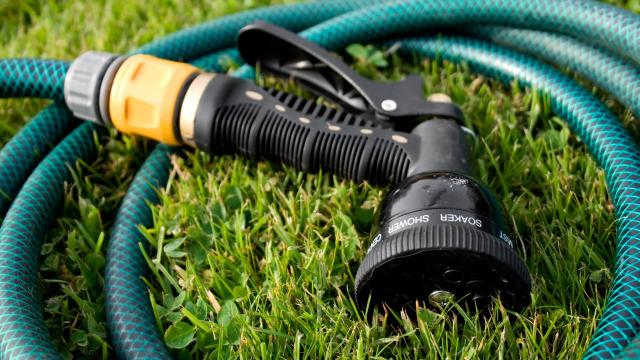Getting your gardening equipment in shape for summer sometimes includes replacing a hose that froze and cracked over the winter, or has sprung a leak. If you have an old hose you need to replace, don’t simply toss it — there are lots of uses for hose material besides carrying water. Here are some ways you can up-cycle your hose to help take care of other things around the house and garden, keeping the material out of the landfill and making your chores easier, too.
Protect your blades
Just because a hose can’t carry water anymore, doesn’t mean it can’t be useful. One way to repurpose an old hose is to use it as a blade protector for saw blades (and protect your fingers from sharp edges). To use a hose as a blade protector, just cut a piece the length of the blade you want to use it on (or the circumference, since it works for power saw blades, as well) and cut the hose open on one side. Slip the hose onto the edge of the blade to keep the teeth sharp and your fingers safe.
Make sure that the hose and the saw are both dry before using your blade protector as moisture can make your blades rust. Keeping them from rubbing against other tools, especially metal ones, will help your saw blades last longer.
Make a bucket handle grip
Cutting a slot in a length of old hose can also get you a bucket handle grip that doesn’t hurt your fingers. When you’re carrying around water or paint in a five gallon bucket, the metal handle can dig into the inside of your fingers and make whatever chore you’re doing more uncomfortable than it needs to be. Sliding a length of hose over your bucket handle will add to the diameter of the handle, spreading the force of the handle against your fingers out and adding some cushioning. The great thing about this trick is that you can keep the handle grip and use it on any handle that digs into your fingers, making this up-cycle reusable.
Protect tiny fingers
If you have a swing set, you can use a length of hose to protect kids’ fingers from getting pinched in the chains. If the chain is small enough, you can thread it through the hose, or you can cut a slot in the hose and wrap it around the chain. This has the added bonus of not allowing chains to get twisted or tangled up, making the swing safer for little ones. You can also similarly use a length of hose to protect any chain and keep it tangle-free. If you have a chain for a driveway access, for example, this method can work for that, too.
Support a sapling
Another great way to repurpose an old hose is to use it instead of rope or twine to support a sapling. Using anything that might cause friction or scarring on the bark of a young tree can cause more harm than good. Narrow materials like gardening twine or synthetic rope can dig into a tree’s bark or cause friction in the wind, wearing away at the bark and damaging the tree. Using a rubber hose to attach a sapling to its stakes will allow it to move in the wind without damaging the young tree because it’s a bit stretchy and has a larger diameter than most gardening twine. It will also allow the trunk of the sapling to expand as it grows without choking the tree or scarring the bark.
Make your own soaker hose
You can also use your hose to carry water in a different way than its intended use. If your hose has a few leaks, you can turn it into a soaker hose for ground level watering in garden beds. Make punctures along the surface of the hose with a nail or an awl, attach it to the end of a regular watering hose, place it in your garden bed, and turn the water on low.
This will allow water to seep into the soil without as much evaporation as watering from above, and it also allows the water to get into the soil where the roots need it without wetting the leaves of your plants, helping to prevent mildew and fungus by keeping the foliage dry.

Leave a Reply
You must be logged in to post a comment.